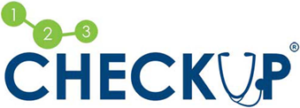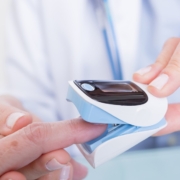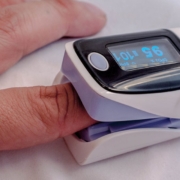5 Reasons to Buy from Us
/2 Comments/in News/by adminOne- Is product health Canada approved?
This is by far the most important factor and concern many customers have. Health Canada has been working in the best interest of the public to set one of the world’s most comprehensive and diligent processes for importing and marketing medical devices. Any company which imports and distribute products in Canada would need to have a valid Medical Device license meaning that the product has been tested and inspected by Health Canada to make sure is within the set guidelines. Unfortunately, Health Canada cannot have much control over companies who are based out of Canada, and also consumers who buy a product for personal use will not be addressed by the Health Canada device license requirement. Potentially a customer could be buying a product which is made of inferior materials with low accuracy and health hazard from vendors which are based out of Canada even though the sold advertises shipping to Canada. One of the ways to spot this issue is the fact that many online vendors mention Sports use or leisure use or aviation use on the product which means the product is not a medical-grade product and is not reliable. All the product range listed on this website have valid medical device license issued by Health Canada.
Two – Where is the product shipped from?
We sent all our products from Canada. We have been using Canada Post as our main shipping partner since we can office our products to every single postal code in the country.
When you buy products that are shipped from outside Canada, you will not have any control over the shipping time as national holidays, customs clearance and many other factors can delay deliveries even up to a month.
Three- Is the price in the Canadian dollar and all other charges are included?
All our products are in Canadian Dollars. And the product customs and import duty had already been paid before we imported the product to Canada. Our customers only pay the price which is listed and they are not liable to any import duty.
When you buy products from overseas and non-Canadian vendors, firstly you might go through the currency conversion which is not much in your favor most of the time as there is also the credit card company issues margin involved. Moreover, when the product comes to Canada- CBS (Canadian border services) will inspect the package and depending on the value declared would add a percentage of custom duty on that and the receiver is liable for paying for that before the product gets released.
Four- What if I would need to return the product if the package is unopened?
We do understand that from time-to-time people’s decisions or needs change. Returning the product to us is pretty simple. You send the product back with your preferred shipping method. You will be liable for a full refund after a 15% re-stocking fee. (This is a fee covering the initial shipping cost that we send you the product)
When you purchase a product from overseas, we would certainly say “changing mind is not an option”. Your return shipping charges could be easily multiple times what you paid for the product.
Five- What warranty do I have for the products?
We have confidence in our product offering. Within the one year after the purchase for any reason if there has been an issue with the product you simply contact us via customer-serivce@123checkup.com. We will send you a pre-paid shipping label- you simply drop the faulty unit at the nearest Canada Post. Upon receiving the product, we will be sending you a brand new unit.
In contrast, many overseas sellers offer a warranty knowing the fact that it will never be economically viable for the customer to claim the warranty in case the product fails. Simply the shipping charge for sending the product will be very high. Most vendors would need 2-3 weeks to repair the unit and send you back with another 3-4 weeks transit time
We always trust our customers’ gut feelings and concerns. We are happy to answer any questions you might have.
How asthmatic kids can benefit from the pulse oximeter
/0 Comments/in News/by adminThe pulse oximeter is a device that can tell how much oxygen is in the blood. Ideally, oxygen saturation should be between 95-99%. If it hits 95% or lower would result in hypoxemia and should be a major concern. The child should be rushed to the ER if it is anything below 90% because, without enough oxygen, the major organs in the body such as the brain, liver, etc. can be damaged just minutes after the symptoms start.
How can the pulse oximeter be beneficial for kids with asthma? When a child has a flare or a severe asthma attack, the airway narrows making it hard for the child to breathe and the air to get in the lungs. Coughing to clear the lungs uses more oxygen thus making the symptoms worse. Oxygen levels can also drop even when the child has stopped coughing or when sleeping. There are some people with breathing problems that have died in their sleep because they weren’t getting enough oxygen. So, by regularly using the pulse oximeter, the level of oxygen saturation can be measured determining whether the child is still getting enough oxygen or the oxygen saturation level is too low.
The pulse oximeter like the CMS-50QB is one device that can be used to monitor oxygen saturation. It is a simple, portable monitor for measuring oxygen saturation and pulse rate and is suitable for use indoors and outdoors. It is also used in monitoring COPD patients or those who suffer chronic obstructive pulmonary disease. Other people who benefit from regularly measuring the level of oxygen saturation are patients with heart problems and anemia among others.
What is Oxygen Saturation Monitoring in Children?
/0 Comments/in News, Personal/by adminAs parents, making sure that your child is healthy and happy is always a topmost priority. We are always in the lookout for any signs that can compromise their health. We want to monitor as much as we can on everything that happens to them.
One of the signs that we should be on guard for is Cyanosis or Turning Blue. This happens when there is not sufficient level of oxygen in the blood. It can be evident at birth but can also appear any time later in life and most often accompanies conditions in which the lungs or heart is compromised.
Cyanosis is one of the symptoms of Hypoxemia, a medical condition wherein there is an abnormally low level of oxygen in the blood. More specifically, it is oxygen deficiency in the arterial blood.
Oxygen saturation means the amount of oxygen being carried in your child’s red blood cells. The optimal oxygen saturation of the blood lies between 95-98 %. Anything less than 95% results in hypoxemia and should be a major concern.
How is oxygen saturation monitoring in children done? One way to measure oxygen saturation is through a test called arterial blood gas. Instead of taking the blood from the vein, it is taken from the artery and the amount of oxygen present is determined.
Another way is through a pulse oximeter. A pulse oximeter like CMS-50QB is one device that can be used to monitor oxygen saturation. It is a simple, portable monitor for measuring oxygen saturation and pulse rate and is suitable for use indoors and outdoors. It is also used in monitoring COPD patients or those who suffer chronic obstructive pulmonary disease.
On one side, the clip contains a strong light source, which shines through the finger. On the other side, a sensor measures what proportion of the light penetrated through the finger and what was absorbed. Different proportions of light penetrate the finger according to the level of saturation of the blood. From this, the oxygen saturation figure is calculated. The pulse rate can also be measured and displayed. The sensor or probe is connected to the monitor by a long thin, wire. It can be used on the finger or the toe.
The monitor and sensor or probe is totally safe, non-invasive and will not hurt your child when it is applied securely but not tightly on the finger or toe. The probe or sensor may be used on a different toe or finger every 8 hours to make sure that the device is working and to give the child’s finger or toe some rest.
Children with low level of oxygen saturation need to be connected to the monitor at all times so that their level of oxygen is constantly monitored. While for others, monitoring can be done when they are sleeping. Your doctor or health provider will determine how long your child needs to be monitored.
When your child’s oxygen is low, oxygen therapy is done so that your child will receive a higher concentration of oxygen than we normally breathe in the air. A face mask or nasal tube is connected to a mechanical ventilator.
Uses and Benefits of Pulse Oximeters
/0 Comments/in News/by adminA pulse oximeter is a device intended for the non-invasive measurement of arterial blood oxygen saturation (SpO2) and pulse rate. Oximeters are widely used in hospitals, medical clinics, operating rooms, and homes. Both oxygen saturation level and pulse rate are vital signs of a patient. Oximeters are inexpensive and can report an accurate reading within seconds. Speed is important especially in an emergency situation.
A pulse oximeter is used medically by patients with asthma, emphysema, chronic obstructive pulmonary disease (COPD), chronic obstructive airway diseases (COAD), and other respiratory conditions. Patients with serious respiratory problems should have their SpO2 levels check regularly and especially if they are not feeling well.
For many patients, doctors often recommend exercise to improve their physical state. However exercise can result in increasing shortness of breath, patients should monitor their oxygen saturation with pulse oximeters while exercising so they can adjust the pace as the oxygen saturation decreases.
Patients with serious cardiac conditions would often experience low SpO2 levels. Pulse oximeters would help them to monitor their conditions and use supplementary oxygen when required. Pleth graph produced by a pulse oximeter shows the change in blood volume during a heart pulse is often a good indication of certain heart conditions.
Pilots, mountain climbers, and people in high altitudes also use pulse oximeters to help guard against hypoxia.
Proper breathing techniques, such as pursed-lip breathing, can increase your oxygen saturation level. Lots of patients with low oxygen saturations are able to increase their saturations all the way up to 93% with good breathing techniques. Practice and pulse oximeter will help patients to achieve this level of efficiency.
The pulse oximeter can also help athletes in high altitude training. The reduction in oxygen level can increase red blood cells in athletes and help to increase his/her endurance.
About us:
Pulse Oximeters & more
www.123checkup.com was established in 2011 in Canada. The company mission is to bring the latest home health monitoring technology to North American families and medical professionals. To find stores carrying our devices: Click hereWhat our experts say:
 Understanding Blood Oxygen LevelsJuly 28, 2022 - 10:11 am
Understanding Blood Oxygen LevelsJuly 28, 2022 - 10:11 am COVID-19: Who’s at higher riskAugust 27, 2021 - 9:50 am
COVID-19: Who’s at higher riskAugust 27, 2021 - 9:50 am COVID-19 Variants: What You Need to KnowAugust 13, 2021 - 9:57 am
COVID-19 Variants: What You Need to KnowAugust 13, 2021 - 9:57 am
Secured by:





